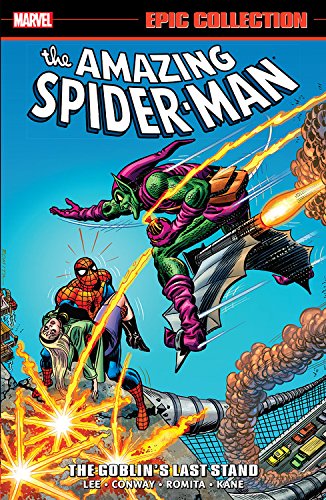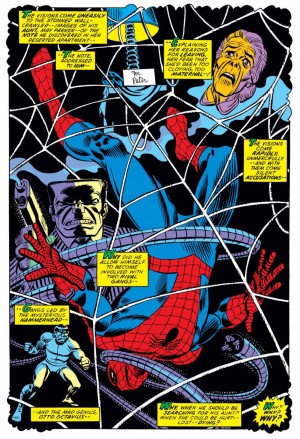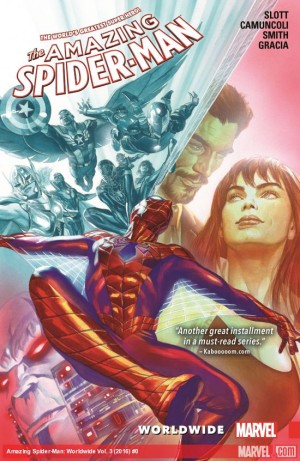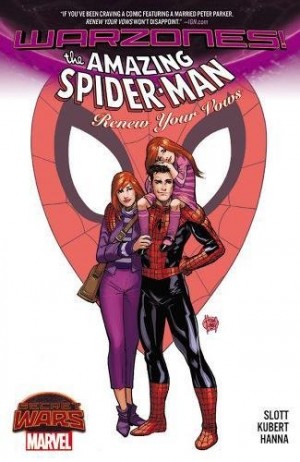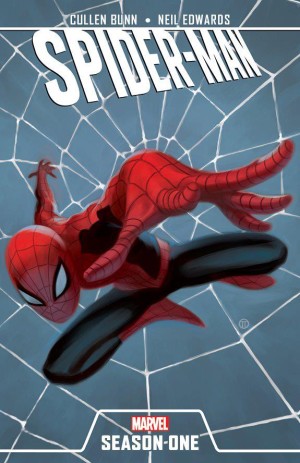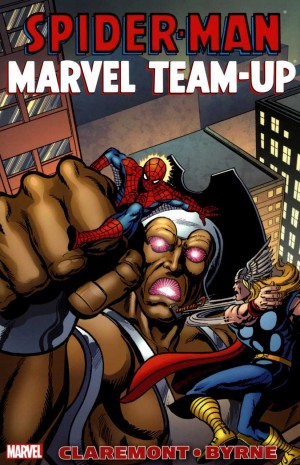Review by Frank Plowright
Spoilers in review
This bulky collection of Spider-Man material covers 1972 and 1973, frankly not banner years for the web-slinger, spanning a period of decline and rise. By 1972 Stan Lee had been struggling with Spider-Man for some while, bereft of ideas after guiding the strip for nine years, his attention spread way too thin elsewhere, yet unwilling to relinquish the writing of the title closest to his heart. He departs in stages, as the future arrives in the form of Gerry Conway.
It’s Conway’s material that’s the best by a country mile. Lee was always a middle-aged man writing about students, very well at times before this collection, but the far younger Conway was barely removed from that generation. He’s far more convincing in presenting personalities of college age kids, and part of that is the dialogue he supplies, authentic for the era. This even applies to the then recently introduced Hero for Hire Luke Cage, employed by J. Jonah Jameson to batter Spider-Man.
The highlights are both the work of Conway. His first gem introduces deluded 1930s style gangster Hammerhead, so named for the steel plate embedded in his head, with which he batters his enemies into submission. For some indefinable reason tales of gang warfare in New York always worked well in Spider-Man, and he’s caught between the opposing forces of Hammerhead and Doctor Octopus, in a fine whimsical aside revealed as lodging with Peter Parker’s Aunt May. Conway would later take that sub-plot to ridiculous extremes, but here it’s deftly handled to provide a suitably sinister threat.
The other gem is the now long-infamous story in which Peter Parker’s girlfriend Gwen Stacy is killed. It’s difficult to overstate the impact of this story at the time, looking back from an era when characters hosting their own title are routinely killed to provide a sales spike for shareholders. Even knowing it’s coming, there’s a frisson of shock at the event itself, which is the centrepiece of what was for years a final confrontation between Spider-Man and the Green Goblin. Spider-Man’s character was that of the put upon hero and this was the first time he was effectively presented as the worm turning. Conway’s deft use of sub-plots adds to the impact, and there’s a fantastic final page indicating the future.
These two really good stories are a mere five issues among the nineteen on offer, but there is further excellence. While some of the plots are insipid, the art never disappoints. It’s all either by Gil Kane or John Romita, both already veterans, and both at the top of their game. The montage sample art is Romita’s work.
Anyone wanting these stories in even more durable packaging can find them spread across the hardback Marvel Masterworks: Amazing Spider-Man volumes 11, 12 and 13. Alternatively the stories are available in black and white on pulp paper as Essential Amazing Spider-Man 5 and 6.
